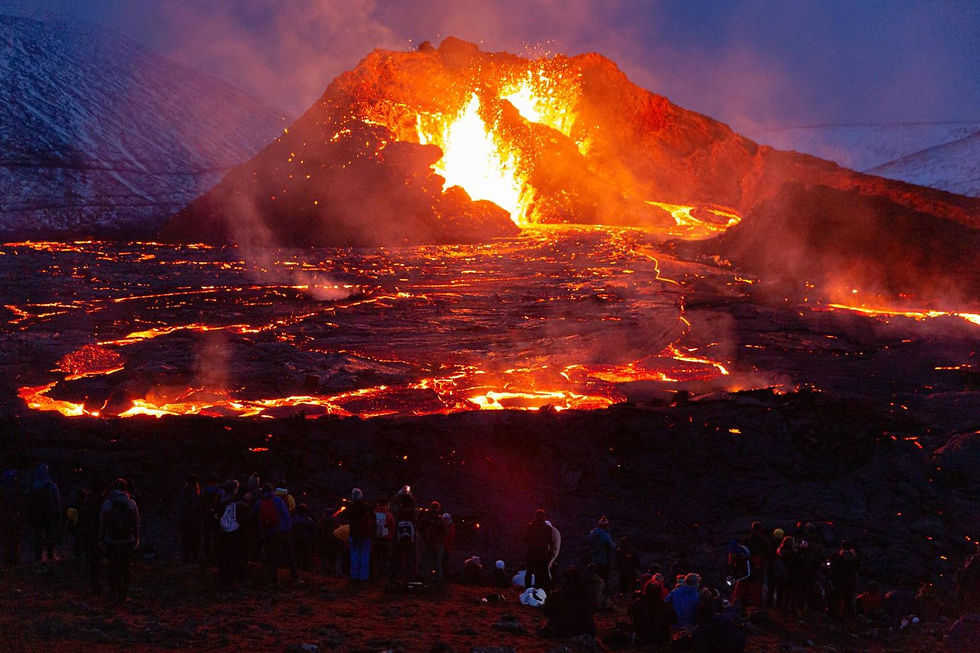Tracking Every Plane in the Sky
- G. Rhodes

- Jun 24, 2023
- 5 min read

On an average day, more than 200,000 flights take off and land all across the world. This number includes commercial, cargo and charter aircraft, which account for about half the total, as well as business jets, private planes, helicopters, air ambulances, government and military aircraft, drones, hot air balloons and gliders. Most of them are equipped with a transponder. This device communicates the aircraft’s position and other relevant flight data to air traffic control and that signal can be captured with inexpensive receivers based upon a technology called ADS-B, for Automatic Dependent Surveillance-Broadcast. That’s what flight-tracking Web sites do in a nutshell, providing users with a real-time snapshot of just about everything that’s in the sky at any one time.

That's come in handy for others besides aviation enthusiasts. When a US Air Force plane carrying former House Speaker Nancy Pelosi landed in Taiwan in early August, over 700,000 people “witnessed” the event as it happened, via one flight-tracking service called FlightRadar24. The plane, a military version of the Boeing 737 called a C-40, departed from Kuala Lumpur, Malaysia before embarking on a circuitous path to Taiwan in order to avoid encounters with the Chinese military, adding hours of flight time. That didn’t make it immediately obvious what its final destination would be, sparking online conversations as the plane slowly veered north towards the island. As a result, it was then the most tracked flight of all time on FlightRadar24, with 2.92 million people following at least a portion of the seven-hour journey. But, that record was eclipsed just one month later when the Royal Air Force flight carrying the coffin of Queen Elizabeth II from Edinburgh to RAF Northolt near London set an all-time flight tracking record on FlightRadar24 with five million people following along.

The Web site, part of a group of popular flight-tracking services along with FlightAware and Plane Finder, was founded in Sweden in 2006 “completely by accident,” says FlightRadar24’s director of communications Ian Petchenik, as a way to drive traffic to a flight price comparison service. It first gathered global recognition in 2010, when the eruption of an Icelandic volcano grounded thousands of flights and attracted four million visitors. “That was certainly our first foray into international events, and how displaying air traffic to the public in real time could influence how people were thinking about world news,” says Petchenik. The controlled airspace of many European countries was closed to instrument flight rules traffic, resulting in what at the time was the largest air-traffic shut-down since World War II. The closures caused millions of passengers to be stranded not only in Europe, but across the world. With large parts of European airspace closed to air traffic, many more countries were affected as flights to and from, as well as over the continent were cancelled.

Before Nancy Pelosi’s flight, the record for the most tracked flight on FlightRadar24 belonged to Russian opposition leader Alexei Navalny on his return trip from a hospital in Germany to Russia, where he was due to be imprisoned. Navalny, Russia’s most prominent opposition politician, had been hospitalized after being poisoned with a Novichok nerve agent. His January 2021 flight was tracked by approximately 500,000 people, beating an earlier record set in April 2020, when almost 200,000 users watched a Boeing 777 draw the crescent and star symbols of the Turkish national flag in the skies above Ankara, to celebrate Turkey’s 100th anniversary of sovereignty.

Earlier, in September of 2017, thousands had watched a brave Delta Air Lines Boeing 757 skirt Hurricane Irma to land in Puerto Rico and take off just 40 minutes later for JFK Airport in New York by carefully positioning itself in the gaps between the hurricane’s “arms.” For the crew of Delta Flight 302, the ride through the outer bands of Hurricane Irma was “uneventful.” But, it was breathtaking for the rest of the world, who watched the aircraft on radar flying down to Puerto Rico and then head back to New York just before the Category 5 storm crashed into the Caribbean island with wind speeds gusting up to 185 miles per hour!

Outside of these major events, the number of people tracking flights is constantly on the rise. “We see a lot of people using the site to track a loved one, track their own flight, or find the incoming flight that they’re going to be on later that day, to make sure the plane’s coming,” says Petchenik. “Another use case are folks who are very interested in aviation, or really like to follow certain types of aircraft. They can also go to the airport, pull up the app and see what’s coming. Then you have people who are professionally invested in the aviation industry because they own an aircraft and they rented it out, or because they have a fleet of aircraft and they want to keep tabs on them. Finally, there are people who are professionally invested in having a lot of flight data. This is airlines, airports, aircraft manufacturers that are using large data sets to gain industry insights.”

To gather the necessary data, FlightRadar24 has built its own network of ADS-B receivers, which they claim is the largest in the world at approximately 34,000 units, covering even remote areas like Antarctica. About a quarter of the receivers were built by the company itself, but the majority were assembled by enthusiasts who provide the data on a voluntary basis. Because building such a receiver is relatively inexpensive (components cost about $100) many have signed up since FlightRadar24 started opening up its network to the public in 2009. A dense array of receivers is essential to track flights globally, but there’s an obvious issue with oceans where the network becomes sparse. So, how do they get coverage over open water? “By finding islands wherever we can and making sure that we have receivers there,” says Petchenik. “But, more recently we’ve turned to satellite-based ADS-B receivers, to be able to better track aircraft over the ocean. However, the most predominant source of data is still our own terrestrial network.”

Having extensive data available can be useful to get an early insight into emergencies and accidents. Occasionally, the data can reveal the cause of a crash before an official investigation does. Take the case of Germanwings Flight 9525. This scheduled international passenger flight originated in Barcelona, Spain and was headed to Düsseldorf, Germany on the morning of March 24, 2015. The aircraft disappeared from radar at 10:39 AM and was later discovered to have crashed 62 miles north-west of Nice in the French Alps. Investigators determined the aircraft was deliberately flown into a mountain by co-pilot Andreas Lubitz. As horrific as this was, the FlightRadar24 data showed a clear picture. “One of the parameters that comes across in the fullest set of data, which we received in the case of the Germanwings flight, is something called the Mode Control Panel - that’s the knob that is turned to tell the aircraft’s autopilot what altitude to fly. Looking at the data on that aircraft, that altitude value was set to zero," reported Petchenik.
What’s commonplace today was unthinkable years ago. Accessing real time and historical flight data through the internet is an important technological benefit of the modern age, useful to travelers, airlines, researchers, journalists and aviation enthusiasts, among others.
Until next time...safe travels.




I bet you have a lifetime subscription to FlightRadar24 !
Another very interesting and educational post!